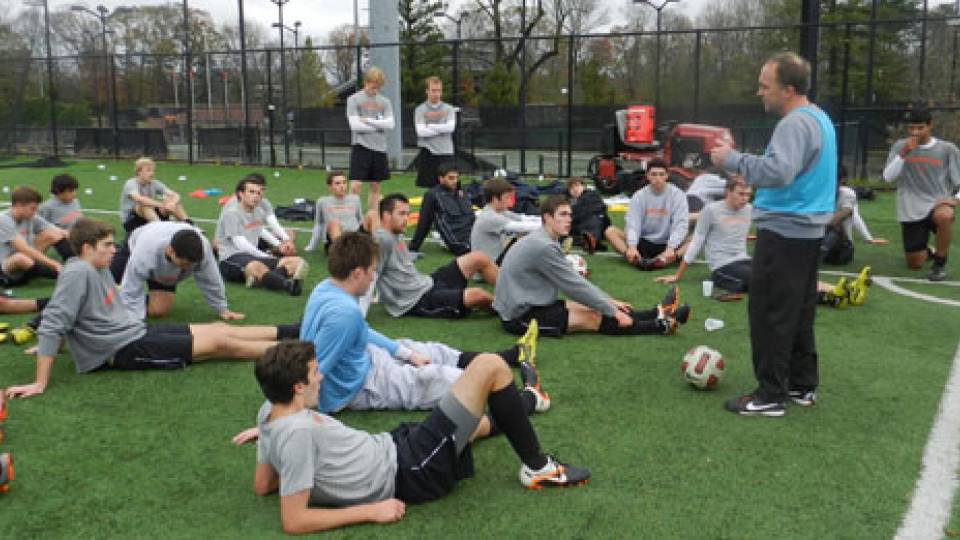As Princeton Borough and Princeton Township started recovering from the havoc caused by Hurricane Sandy, about 150 first responders working during the storm were provided with free meals by the University's Dining Services. Local residents whose homes lost power were invited to warm up, recharge phones and other electronic devices and use wireless Internet service at a hospitality center on campus.
The hospitality center, which was opened at the request of the Princeton municipal emergency operations center, "was just one of a number of ways that the University looked to provide resources to the community during the emergency," said Kristin Appelget, the University's director of community and regional affairs.
The University also offered a heavy duty electricity generator for use by Princeton municipal authorities if necessary.
Students affiliated with the University's Pace Center for Civic Engagement also volunteered at a community respite center at the John Witherspoon Middle School, where Princeton residents who lost power during Hurricane Sandy were able to take showers, charge electronic devices, get food and stay overnight.
The University's TigerTransit system provided free shuttle bus service between Princeton Junction station and the Princeton station while the "Dinky" train service was suspended in the aftermath of the storm. The TigerTransit service continued until New Jersey Transit began running shuttle buses on the route.
The University, which also lost power from the public electricity provider, had to shut down many administrative and academic buildings and run critical functions on limited power from the University's independent cogeneration plant for more than 24 hours. The plant can generate 13 megawatts of electricity, which is significantly less than the maximum campus demand when all buildings are fully operational.
However, University buildings that depend solely on electric power from the public grid remained without power for extended periods of time, and power was not restored to some University housing until Monday, Nov. 5.
Due to continued power outages in the Princeton area, several polling stations were relocated to the University’s Computer Science Building on Olden Street and the University's Jadwin Gym, where a large section of the parking area was reserved for voters. More than 3,400 voters from municipal districts 1, 2, 4, 14, 15, 16 and 20 cast their votes on campus on Nov. 6.
The meals for the first responders, students who remained on campus during fall recess and employees on duty were prepared and served by a small team of Dining Services employees who were able to make it to work.
"We always use the phrase, 'it's all about food, mood and attitude,'" said Stu Orefice, executive director of Dining Services. "Despite the challenges that they faced, our staff maintained a positive attitude, and our goal was to share that spirit through our service."
Orefice continued working even though his own house was badly damaged by the storm.
"We were operating with a lean but dedicated team that made literally hundreds of people happy — by serving nearly 9,000 hot and cold meals over five days," he said. "When Frist Campus Center opened its doors on Wednesday, not many restaurants in town were open, so members of the Princeton community started coming in, and we were selling as much as we do when all our students are back."
Elsewhere on campus, hundreds of employees, many of whom were unable to reach their homes, worked in shifts to keep critical University functions running. The storm felled about 110 trees, which blocked roads and damaged vehicles, fences and other property. No injuries were reported.
Throughout the storm the University coordinated its efforts with a joint emergency operations center for Princeton Borough and Princeton Township.
The University's response to the hurricane was coordinated through an emergency operations center on campus, which was staffed by representatives from the Department of Public Safety, Facilities, Dining Services, University Services, Office of Information Technology (OIT), Office of Environmental Health and Safety, University Health Services, Campus Life, Office of the Dean of Undergraduate Students, Office of the Dean of the Graduate School, Office of Human Resources, and Office of Communications, among others.
